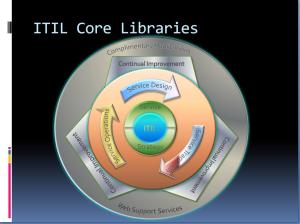 Over the past couple of years, I have found myself being drawn back to my IT roots, looking to solve the same old problems that plagued IT when I was so much younger had a full head of hair, and still had to learn that I hadn’t learned it all quite yet. Back in the day, my boss asked me how the systems were running, and how IT was performing.
Over the past couple of years, I have found myself being drawn back to my IT roots, looking to solve the same old problems that plagued IT when I was so much younger had a full head of hair, and still had to learn that I hadn’t learned it all quite yet. Back in the day, my boss asked me how the systems were running, and how IT was performing.
I thought a moment, and responded, “All of the systems appear to be running well, we haven’t had any downtime lately, and the server room is humming along nicely.” He waited. I broke the silence with “It’s all good.” My boss, being the patient and well mannered fellow that he was, reiterated, “So the systems are all up, but how is IT doing? Are we at capacity on any of the systems, and are our processes working like they should?” I couldn’t respond honestly, so I admitted it. He had never asked me before how our processes were working, so it must have been all that golf he had been playing lately that had gotten to him. We were blind to whether we were doing the right things, and doing them well or poorly. My engineers and I had put together some fantastic systems and processes for the company, reliable, scalable, capable, but had forgotten to consider how we would be able to measure when we needed to scale, improve, support, or replace them. DOH! We did have basic system health gauges, but that was just for monitoring CPU and RAM thresholds. Time to think bigger, and smaller.
Why do we collect metrics? Metrics are a critical component of Management, whether it be Information Security, or Projects, and Programs. If you aren’t monitoring your exposures and measuring your results, how will you know whether you have been successful? IT is all about strategy. We implement systems in order to meet business objectives. IT systems support the objectives of the business. The business could still run without IT. Much slower, ineffecively, inefficiently, and at a retarded pace, but the business could still run. Without metrics, how do you prove the value that your IT or Security team is bringing to the organization? How do you justify continued spending on improvements, new tools, new technologies? Continue reading
 It’s Friday, and I finally don’t have an interview scheduled. Time to post another long winded entry. Someone ought to hire me and take away all this free time… (My golf-pro career move didn’t fly well with the wife…) Let’s talk about cloud computing again.
It’s Friday, and I finally don’t have an interview scheduled. Time to post another long winded entry. Someone ought to hire me and take away all this free time… (My golf-pro career move didn’t fly well with the wife…) Let’s talk about cloud computing again.

 APT (advanced persistent threat) attacks have been in the press since 2006, but are only now gaining real media attention due to recent high-profile attacks, and IT teams must prepare to deal with these threats before they become commonplace. Some security practitioners consider APT an “overblown marketing term” and others will argue that it only affects the military or government agencies. In the military, the term APT has been used to describe a process of maintaining intelligence operations and conducting information warfare against an enemy. In information security terms, hundreds of companies around the world have been completely and utterly compromised by information security APTs, which allow hackers to mine and exfiltrate sensitive corporate data under the security radar, over an extended period of time.
APT (advanced persistent threat) attacks have been in the press since 2006, but are only now gaining real media attention due to recent high-profile attacks, and IT teams must prepare to deal with these threats before they become commonplace. Some security practitioners consider APT an “overblown marketing term” and others will argue that it only affects the military or government agencies. In the military, the term APT has been used to describe a process of maintaining intelligence operations and conducting information warfare against an enemy. In information security terms, hundreds of companies around the world have been completely and utterly compromised by information security APTs, which allow hackers to mine and exfiltrate sensitive corporate data under the security radar, over an extended period of time.